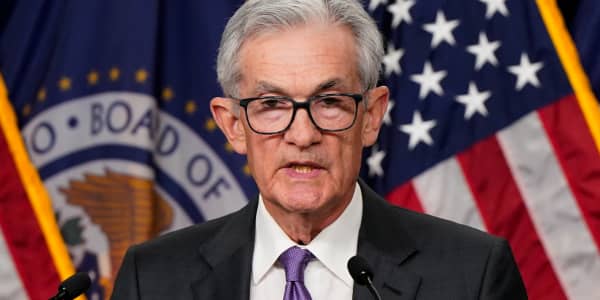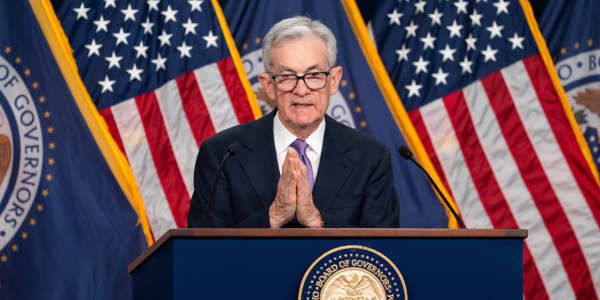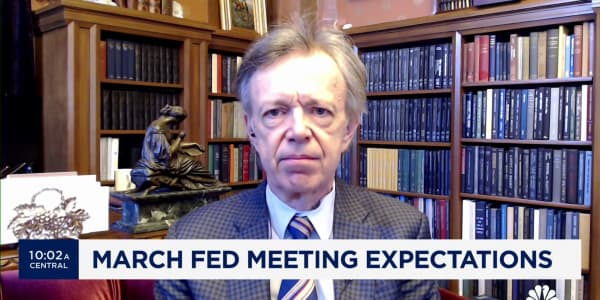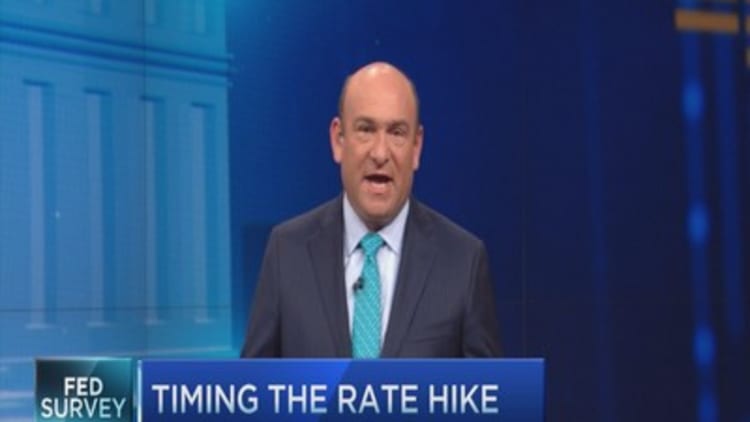
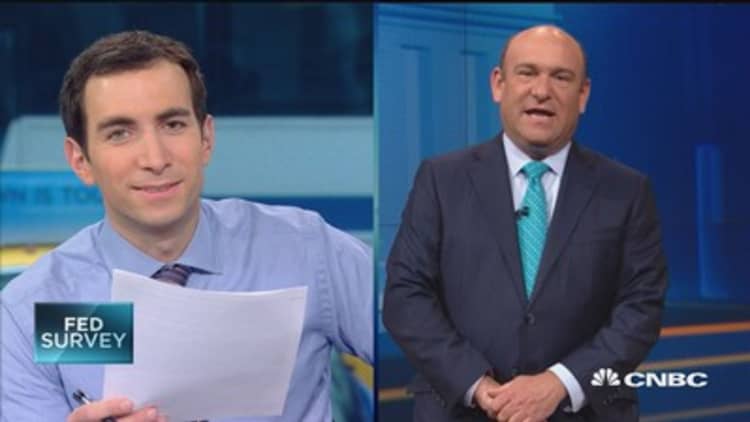
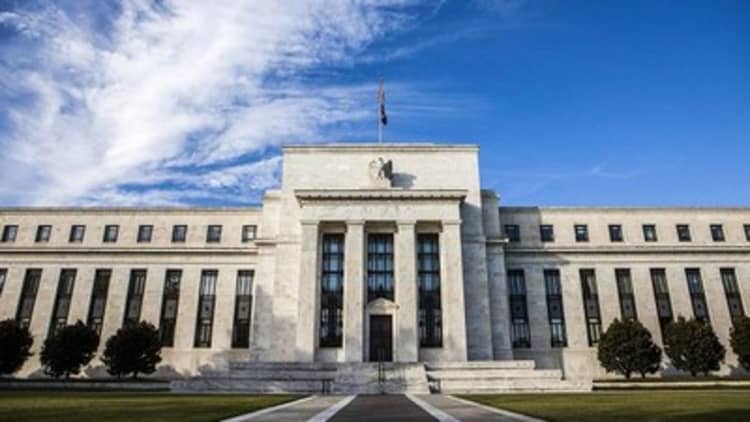
After a weak first quarter and a rebound in the second, Wall Street remains convinced of a Fed rate hike in the third quarter. Respondents to the CNBC Fed Survey continue to look for the Fed's first rate increase in nine years to take place in September.
While 92 percent see a Fed rate rise this year, up from 84 percent in the April survey, the central bank is seen hiking only modestly this year. The fed funds rate is forecast to end the year at just 53 basis points, or two quarter-point hikes. For 2016, respondents forecast a funds rate of 1.56 percent. That could mean four quarter-point increases, or a rate hike just every other meeting.
"We think the June FOMC meeting will be all about preparing the ground for a post-summer rate hike," said Thomas Costerg, an economist at Standard Chartered Bank. "This should support our scenario that the first rate hike will be in September. A July rate hike remains unlikely, however, as the Fed probably wants to see more evidence of a Q2 GDP rebound, and more wage data."
Most of the 39 respondents, who include economists, fund managers and analysts, believe rate hikes are already baked into the bond and stock markets. A full 67 percent say it's priced into bonds, up from 42 percent in April; and 61 percent say it's in stock prices now, up from 47 percent. That could explain why equities are still seen edging higher this year and next despite calls for a rise in the yield on the 10-year government bond.
Read MoreCNBC Fed Survey: Smaller rate hike seen, and later
"It is no secret that the Fed will raise rates in the near future. We believe that the markets will be resilient and continue to grow, despite being six years into a bull market cycle," said Mark Elenowitz, CEO of BANQ, a unit of TriPoint Global Equities. "While many people continue to draw comparisons between today's market and the markets leading up to the tech crash and 2008 recession, we trust that the underlying fundamentals of today are stronger."
Not all are quite so bullish. Respondents to the CNBC Survey estimated the S&P 500 will grind 3.6 percent higher by year-end 2015 and 10 percent higher by year-end 2016. That's not terrible considering stocks are expected to face a headwind from rising rates: the average estimate for the 10-year yield in 2015 rose more than 30 basis points to 2.64 percent and to 3.24 percent for 2016.
Robert Tipp, chief investment strategist of Prudential Fixed Income, said he still sees value in bonds since the market "has gone a long way towards pricing in the Fed's likely path of rate hikes." Tipp said spreads on select issues in high yield and investment-grade corporate "are attractive."
Forecasts for higher yields come amid expectations for lower growth this year. After GDP contracted in the first quarter, respondents to the survey slashed their 2015 growth forecast to 2.32 percent, from 2.7 percent in the April survey. As recently as January, forecasts called for 3 percent growth this year. But estimates for 2016 remain about the same, down just 3 basis points to 2.78 percent.
"The U.S. economy has reached escape velocity," said Mark Zandi, chief economist of Moody's Analytics. "It would take a sizable shock to derail it. Odds are high the economy will be back to full employment by this time next year."
The measure of full employment in the survey remains unchanged at 4.8 percent, which is three-tenths of a point below the Feds' own measure. But that measure could come down when the Fed publishes its economic estimates on Wednesday as several officials have suggested the long-run unemployment rate may be lower than the current 5.1 percent Fed average.
Read MoreWall Street eyes data for rate hike clues
The bottom line is that survey respondents still see significant economic slack, enough to ease any immediate concerns of inflation.
Respondents said, for example, that they would not worry about wage gains causing inflation until they grew at a 3.6 percent annual rate, more than a percentage point and a quarter above the current rate. Two-thirds said the current level of wage growth presents neutral risks between inflation and deflation. And a fifth of respondents say that there is little connection between wage and price inflation.
Meanwhile, more than 60 percent of respondents see labor slack in the economy and more than 70 percent say there is unused productive capacity in the country.
Respondents did, however, up their forecast for 2016 inflation, putting it at 2.3 percent, the highest level since we began asking in December. In 2015, inflation is seen rising just 1.17 percent, up from 1 percent in the April survey.
Most of the risks to the U.S. economy appear to emanate overseas as geopolitical risks and global economic weakness were seen as the two biggest threats. Concern about rising interest rates did become more prominent, but remains only the fourth most chosen top concern. More worrisome is the prospect that Greece could leave the euro zone.
The CNBC Fed survey was conducted June 11-13.



